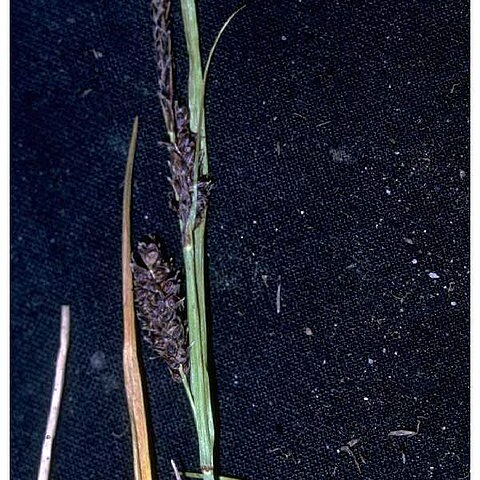Colonial by creeping rhizomes, forming a turf; stems slender, 3–5(–8) dm, purplish at base; lvs 1–2 mm wide; ligule about as wide as or wider than long; staminate spike solitary or with a second one at its base; pistillate spikes 1 or 2, short-cylindric, 0.5–2 cm, erect, longer than the peduncle; lowest bract lf-like but not sheathing; pistillate scales brown, the lower cuspidate or shortly acuminate, the upper blunter; perigynia 15–40, ovoid, scarcely inflated, biconvex and ± flattened, 2.5–3.5 mm, nerveless or nearly so except for the marginal ribs, the beak 0.5 mm, emarginate; achene lenticular, obovoid, 2–2.5 mm, the persistent style strongly bent or contorted below; 2n=80. Moist or wet, sandy or gravelly soil; circumboreal, s. to Me., Hudson’s Bay, and the w. cordillera. Our plants are var. miliaris (Michx.) L. H. Bailey, which ranges n. to Lab. (C. miliaris)


